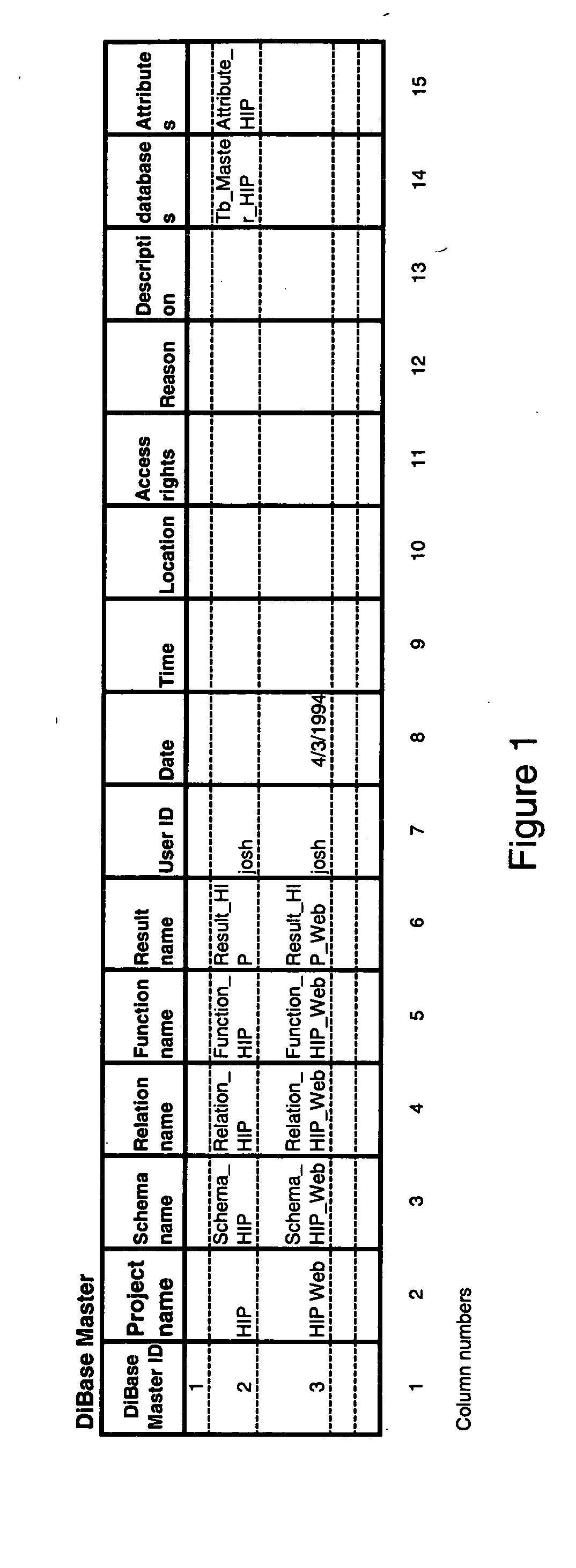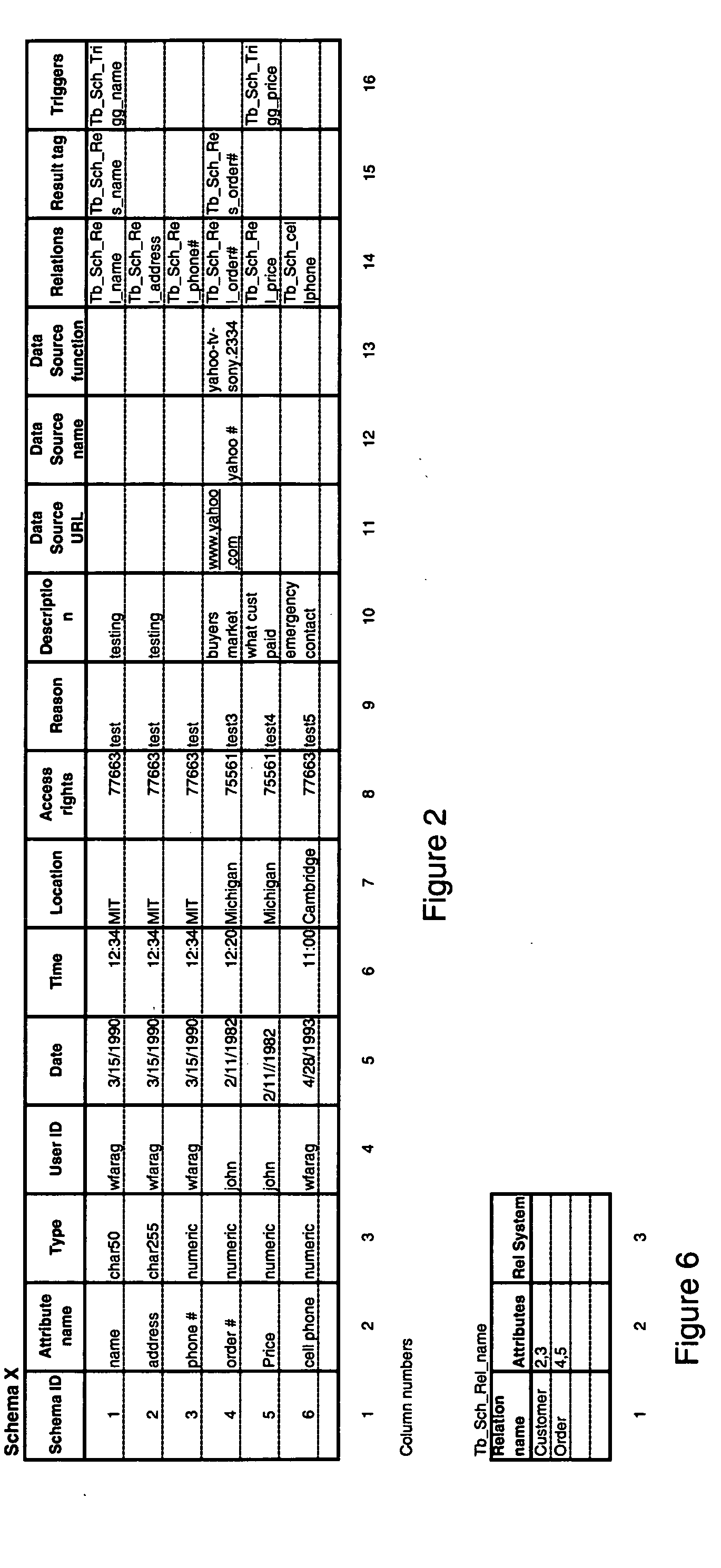Holistic dynamic information management platform for end-users to interact with and share all information categories, including data, functions, and results, in collaborative secure venue
a dynamic information management and end-user technology, applied in the field of information management, can solve the problems of large business impact, inability to change relationships on the fly, static existing dbms, etc., and achieve the effect of limiting the effectiveness of the solution and adapting to chang
- Summary
- Abstract
- Description
- Claims
- Application Information
AI Technical Summary
Benefits of technology
Problems solved by technology
Method used
Image
Examples
Embodiment Construction
To better understand the subtlety of the invention, let's discuss basic concepts. Our understanding of information versus data is important: a data item becomes information when put in a context for a need. For example a traveler asks an airline ticket agent: “When is the next flight to Dallas?” The airline agent answers “5:25”. To clarify, 5:25 becomes information and not data because it was used in a context satisfying a need requiring no more processing. Here, the context is a set of variables (i.e. attributes) like: Start location as airport terminal or gate Time of day—morning or afternoon, etc. Airline carrier Routing method—direct non-stop.
Such context was assumed by all parties, the traveler and the airline agent, during their interaction.
Every attribute in a context plays a role in affecting other attributes and the result obtained. An attribute adds a dimension to the context space. In the ticketing example, attributes carrier and routing method can limit the outc...
PUM
 Login to View More
Login to View More Abstract
Description
Claims
Application Information
 Login to View More
Login to View More - R&D
- Intellectual Property
- Life Sciences
- Materials
- Tech Scout
- Unparalleled Data Quality
- Higher Quality Content
- 60% Fewer Hallucinations
Browse by: Latest US Patents, China's latest patents, Technical Efficacy Thesaurus, Application Domain, Technology Topic, Popular Technical Reports.
© 2025 PatSnap. All rights reserved.Legal|Privacy policy|Modern Slavery Act Transparency Statement|Sitemap|About US| Contact US: help@patsnap.com



